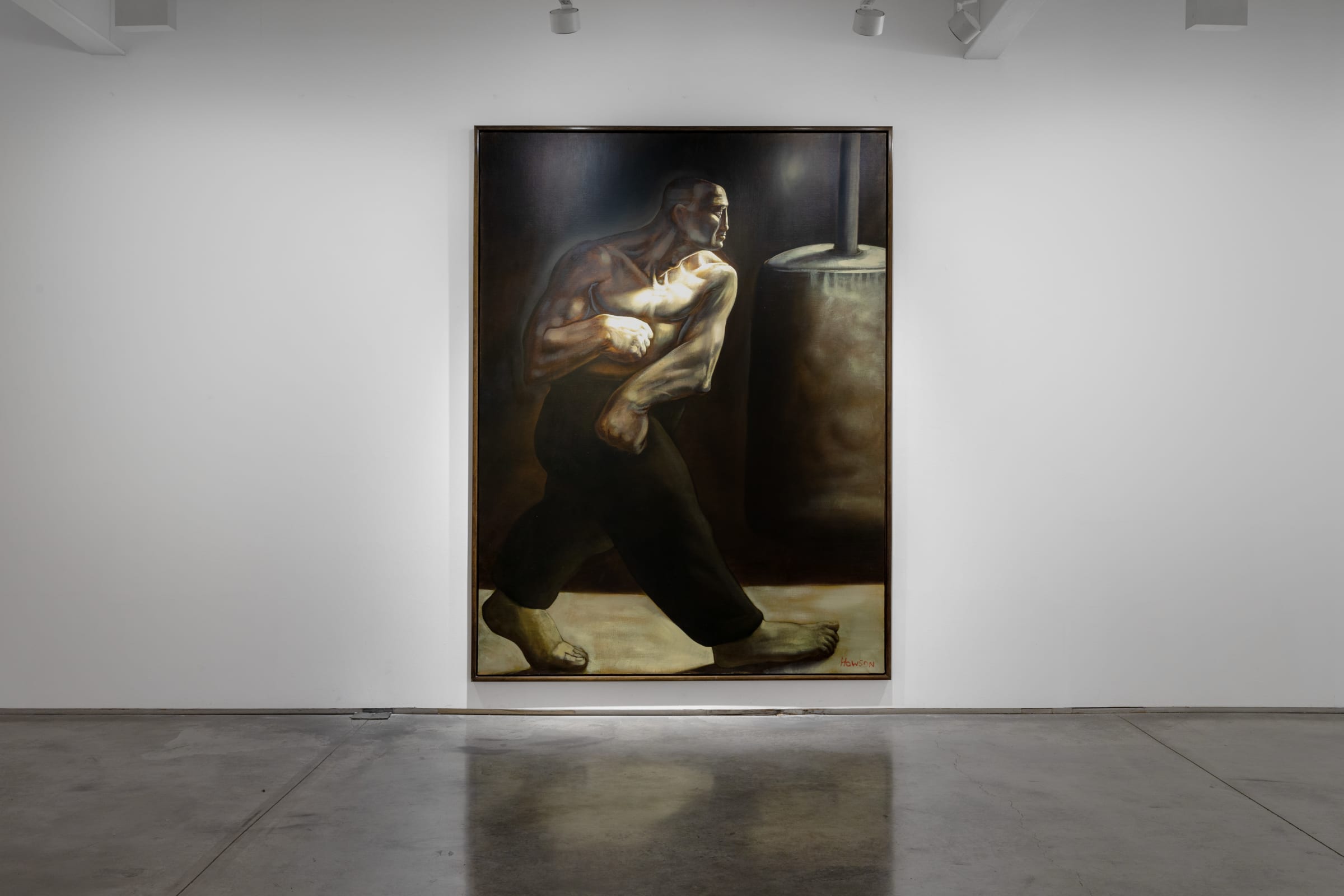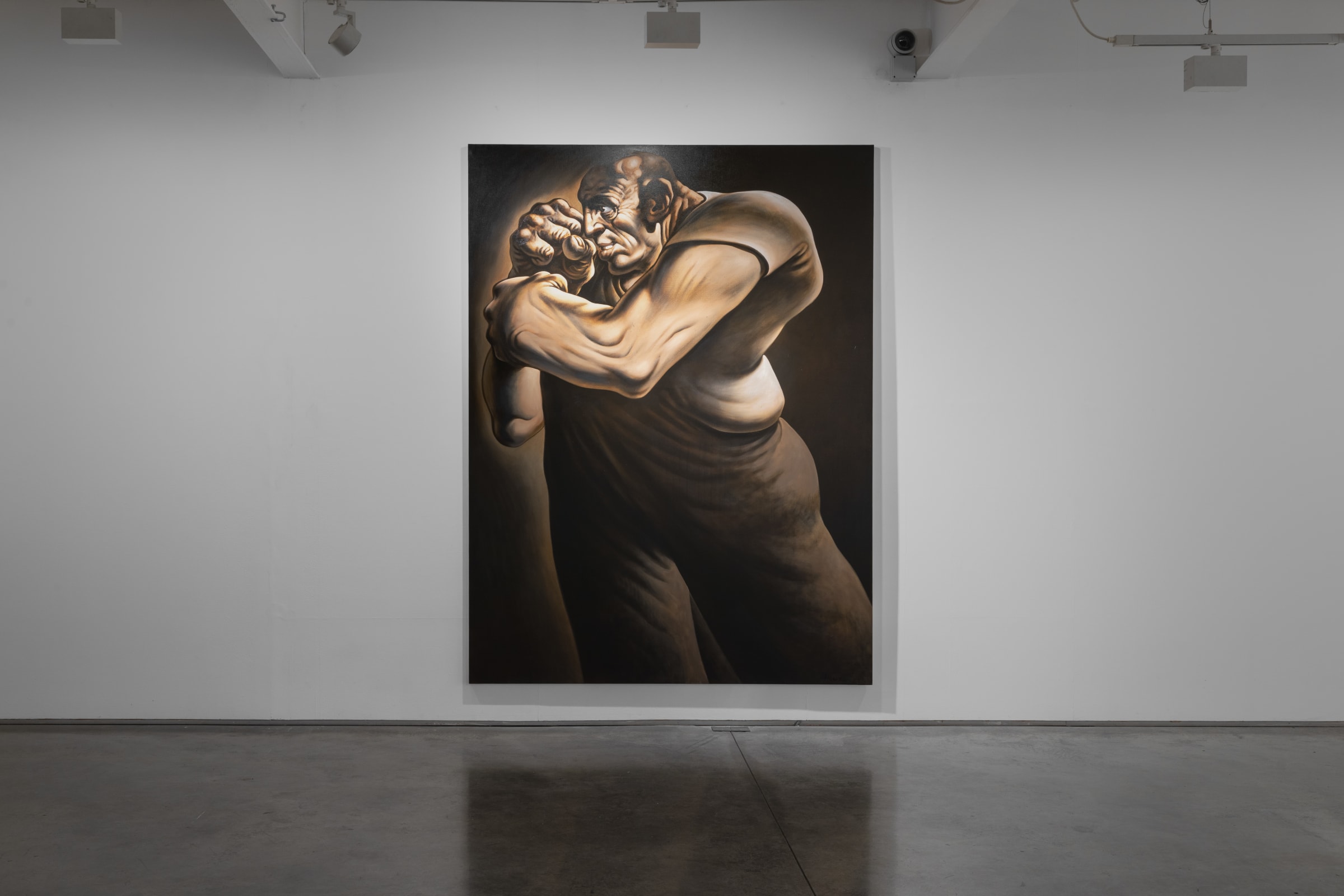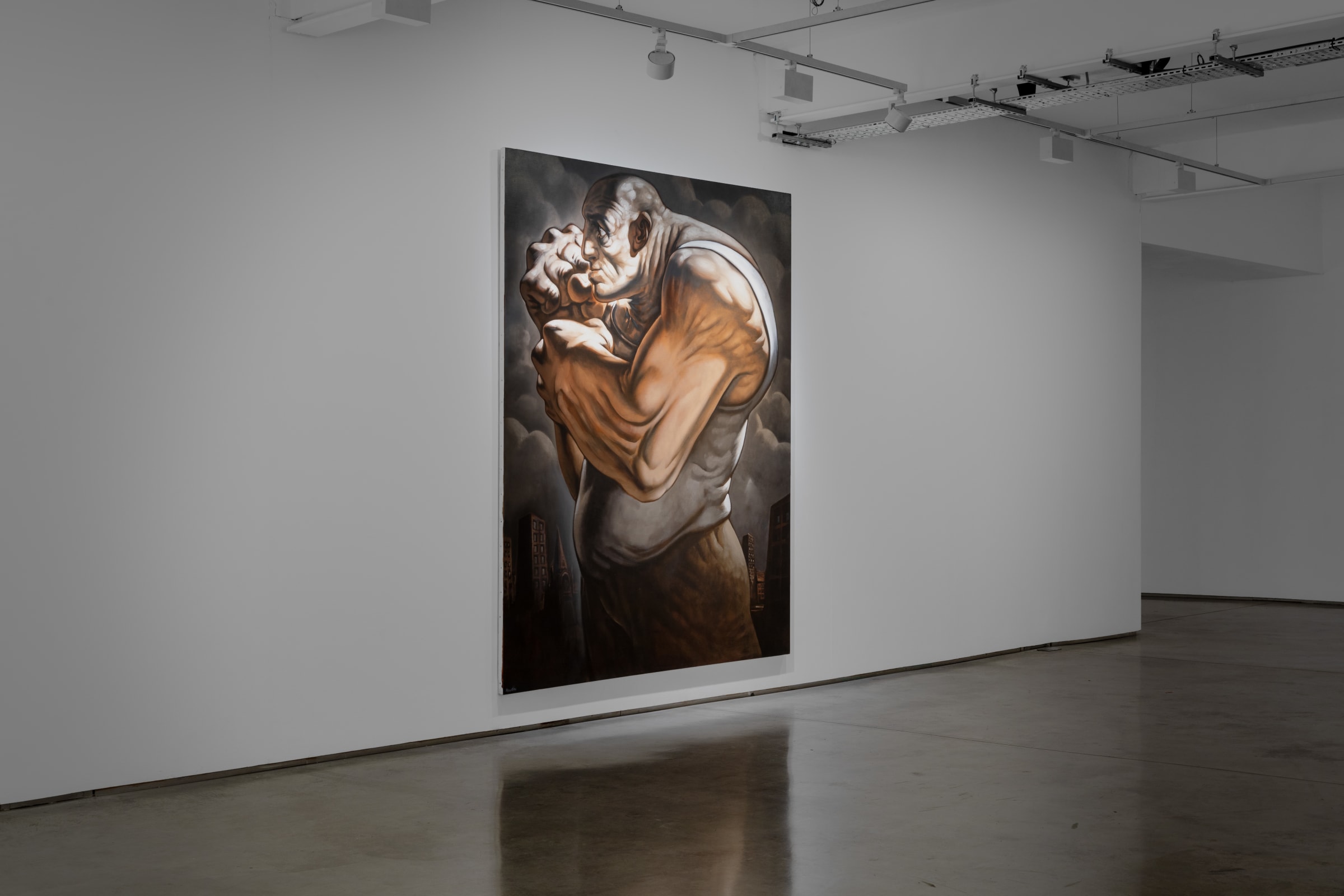


Peter Howson
The Boxers
Overview
Peter Howson is renowned for his large paintings of boxers, depicting brooding, monochromatic figures with both physical and psychological intensity. Someone Up There Likes Me, Magog and Mechech reveal disparate men who are enduring an endless struggle, refusing to give up hope. Throughout his practice Howson continuously projects on his subjects a vulnerable sense of anguish and a valiant spirit, fully embodied within the boxers.
The boxer was Howson's breakthrough into the art world, becoming one of his most familiar images. After dropping out of the Glasgow School of Art in 1977, the artist spent a short time in the army and then worked as a warehouseman and bouncer whilst living in a gymnasium. During this period, Howson met marginalised people from rougher parts of Glasgow who would become regular subjects, including boxers, dossers, squaddies, and drinkers.
Howson began depicting boxers during his residency at St Andrews University in 1984/5. The boxing motif stemmed from one drawing and marked Howson’s commitment to portraying heavily-outlined figures with imposing physiques and colossal fists, poised to punch. The boxers are in both Howson's single-figure paintings that investigate the psychology of their subjects, as well as in his complex compositions that include rolling bodies in protracted narratives.
These dramatic, darkly quiet works can be traced to the language of history painting, with Howson’s use of stark and exaggerated lighting alongside intricate composition. Howson’s reference points of Goya, Brueghel and Hieronymous Bosch are recognised in his scrutiny of the repulsiveness of contemporary society. The boxers are more surreal than real, with Howson utilising his instinctive knowledge of anatomy to contort and magnify characteristics of the human form.
The recurring portrayal of the boxer is consequential as it encapsulates the struggles Peter Howson has faced within his own career and personal life. Similar to the men with their fist curled ready to fight, or to those pounding punching bags, the artist as an anti-hero continually confronts his intimate distresses and sufferings, returning again and again to the fight, determined to prevail.

Someone Up There Likes Me (1989) was painted just after Howson turned thirty. The large canvas depicts a solitary figure, a moment from striking a punching bag in a darkly lit room, with a spotlight highlighting the tensed muscles protruding from his arms and chest, simultaneously accentuating the thrashing the bag has endured over time.
Howson captured the boxer just before he pounds the bag, creating an aura of intensity and anticipation. Although the content within the painting is minimal, focusing on the boxer and the bag, Howson conveys that the bag is not the enemy here, but that the boxer is fighting another, more internal, struggle. A hazy light above appears star-like, protective as well calling the subject to action. The lighting reveals the side profile of the boxer, emphasising the focus and determination of his direct gaze. For an intense combat sport, Howson has depicted an eerie, calm silence preceding the explosion of the strike.


Magog (1997) is a potent study of a single figure’s psychology. The painting visually exemplifies the boxer’s strength through the composition of his anatomy. This man is oversized and intimidating, his body occupies the entirety of the 244 x 183 cm canvas. Contorting and twisting against a dark background, his stark muscles burst against his skin emphasised by a single light shining on his upper body. The light reveals that the boxer’s fists are in front of his face, as he stares his opponent directly in the eyes. Howson uses dark shadows to portray the creases and lines in his face, mirroring the definition of the muscles in his body. His body language indicates he is facing an enemy, protecting himself whilst also being prepared to fight back.
The title Magog references religious narratives, including the Hebrew Bible, the New Testament and the Quran. In the New Testament, Gog and Magog are referred to as metaphors for archetypal enemies of God, the names appertained to the evil beings that will join with Satan in the great struggle at the end of time.




About Peter Howson
Peter Howson is one of the UK's leading contemporary figurative painters. Born in London in 1958, at age four he moved with his family to Ayrshire. He studied at Glasgow School of Art from 1975-1977, returning in 1979 to complete a master's degree. He lives and works in Glasgow.
Emerging from Glasgow School of Art in the 1980s, Howson quickly proved his skill of capturing the maverick, the excessive, the non-conformist and his own personal understanding of the struggles of everyday life, with an ability to engage with individuals on the peripheries of society . He was a focal member of the group of young artists to emerge from the Glasgow School of Art during the 1980s dubbed the 'New Glasgow Boys'. In 1985, he was made the Artist in Residence at the University of St Andrews whilst working as a part-time tutor at Glasgow School of Art.
In 1992 he was commissioned by the Imperial War Museum to record the conflict in the former Yugoslavia. Howson was appointed official British war artist for Bosnia in 1993, where he witnessed the harrowing realities of war, culminating in a solo exhibition at the IWM London in 1994.
Howson is the recipient of numerous awards, including The Henry Moore Foundation Prize in 1998 and the Lord Provost's medal, Glasgow, in 1995. In 1996 he was made Doctor of Letters, Honoras Causa, by the University of Strathclyde. He was awarded an OBE in 2009. In 2011 Howson completed a dramatic rendering of the martyrdom of St John Ogilvie for the renovated St Andrew's Cathedral in Glasgow. The two year process of working on the commission was the subject of a BBC documentary.
Howson has exhibited throughout the UK and internationally, and in 2023 had a major retrospective at the Edinburgh City Art Centre. His works are represented in public collections including the Metropolitan Museum of Art and the Museum of Modern Art, New York; Tate, London; the Imperial War Museum, London; British Museum, London; National Galleries of Scotland, Edinburgh; Edinburgh City Art Centre; Glasgow Museums; the Victoria and Albert Museum, London; and National Gallery of Norway, Oslo.


